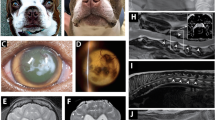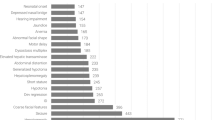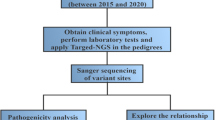Abstract
Gaucher disease (GD) is an autosomal recessive, lysosomal disorder caused by mutations in the gene for the β-glucocerebrosidase (GBA) enzyme. Presence of the non-functional GBAP pseudogene, which shares high sequence similarity with the functional GBA gene, has made it difficult to carry out molecular analyses of GD, especially recombinant mutations. Using a long-range PCR approach that has been skillfully devised for the easy detection of GBA recombinant mutations, we identified four recombinant mutations including two gene conversion alleles, Rec 1a and Rec 8a, one reciprocal gene fusion allele, Rec 1b, and one reciprocal gene duplication allele, Rec 7b, in Korean patients with GD. Rec 8a, in which the GBAP pseudogene sequence from intron 5 to exon 11 is substituted for the GBA gene is a novel recombinant mutation. All mutations were confirmed by full sequencing of PCR amplicons and/or Southern blot analysis. These results indicate that the usage of long-range PCR may allow the rapid and accurate detection of GBA recombinant mutations and contribute to the improvement of genotyping efficiency in GD patients.
Similar content being viewed by others
Introduction
Gaucher disease (GD) is an autosomal recessive disorder resulting from mutations in the gene that encodes the lysosomal enzyme, β-glucocerebrosidase (GBA).1 The human GBA gene is composed of 11 exons and 10 introns and is located on chromosome 1q21.2 The non-functional GBAP pseudogene is located approximately 16 kb downstream of the functional GBA gene.2 The difference between the GBA and GBAP genes, including size, is due to exonic and intronic deletions and nucleotide substitutions of the GBAP pseudogene (Supplementary Figure 1). In addition, the metaxin 1 gene (MTX1) and its pseudogene (MTX1P) are contiguous to the GBAP and GBA genes, respectively, in the opposite direction.3 Because of the extremely high degree of sequence homology (∼96%) between GBA and GBAP genes, unequal homologous recombination can occur during meiosis between them, which can result in pseudogene-derived mutations including non-reciprocal gene conversion alleles and reciprocal crossing over alleles, gene fusion and duplication alleles.4
To date, several GBA recombinant mutations, including gene conversion alleles and, less frequently, reciprocal crossing over alleles, have been identified and referred to by various aliases.5 In this study, we report four GBA recombinant mutations including one novel allele identified in Korean GD patients using a long-range PCR approach.
Materials and methods
Long-range PCR
Amplification of GBA recombinant alleles was carried out with LA Taq polymerase (Takara, Otsu, Shiga, Japan) and gene-specific primers (Supplementary Table 1). For detection of the gene conversion alleles, nested long-range PCR was conducted (Figure 1a, i). The first amplification (10 cycles), to obtain long genomic DNA containing the entire GBA and the first region of MTX1P, was carried out using the primer set, GBA-f and ψMTX1-r. Nested PCR (35 cycles) for the entire GBA gene (exons 1–11) was subsequently conducted using the primer set GBA-f and GBA-r. This PCR was also used for the detection of non-recombinant GBA mutant alleles residing on other GBA loci in trans or cis chromosomes of the GD patients. For detection of reciprocal gene fusion and duplication alleles, long-range PCR (35 cycles) was conducted using the primer set, GBA-nf and MTX1-r (Figure 1a, ii) and ψGBA-nf and ψMTX1-r (Figure 1a, iii), respectively.
Amplification of β-glucocerebrosidase (GBA) recombinant alleles using three sets of long-range PCR primers. (a) Schematic representation of three types of predicted GBA recombinant alleles. GBA and MTX1 genes are represented by the closed box above the line and slashed box below the line with their pseudogenes (ψ), respectively. The PCR primer locations and directions used for amplification of the GBA recombinant alleles are indicated with their names, and putative lengths of amplicons are indicated. Asterisk (*) indicates a non-recombinant, intact GBA locus next to the reciprocal gene duplication allele after the recombination occurs. (b) Agarose gel images of the long-range PCR amplification from genomic DNAs of a normal control (NC) (wt/wt) and patient control (PC) (G46E/L444P), and four patients (P1–P4). The primer pairs used for PCR are indicated below each panel.
Southern blot analysis
The GBA cDNA probe was labeled with 32P using the Amersham Rediprime II Random Prime Labeling System (GE Healthcare Life Sciences, Amersham, Bucks, UK). Genomic DNA (∼20 μg) was digested with the restriction enzyme SspI (NEB, Ipswich, MA, USA) overnight at 37 °C. The next steps were carried out according to the previously reported protocols.4
Results and discussion
We used a long-range PCR approach on genomic DNAs from four patients (P1–P4), with undetermined perfect genotypes among 36 Korean GD patients.6 Clinical characteristics of the patients P1–P4 are summarized in Table 1. A normal control (NC) carrying wild-type GBA alleles (wt/wt) and patient control (PC) carrying missense mutant alleles (G46E/L444P) were used as controls in this study. Genomic DNAs of P1 and P2 were amplified only using the GBA-f plus GBA-r primers and not the other two primer pairs as observed in the controls, NC and PC (Figure 1b). This indicated that in any case, neither P1 nor P2 carries the reciprocal crossing over alleles. We extracted, purified and sequenced one band (mixed 2 GBA alleles from both homologous chromosomes) of P1 and 2 separate bands of P2. Sequence analysis revealed that both P1 and P2 had missense and gene conversion alleles, R496H/Rec la and G46E/Rec 8a, respectively (Supplementary Figure 2). Rec 1a (RecNciI) is a common mutation, but Rec 8a was characterized as a novel mutation. The Rec 8a allele (the lower band in Figure 1b) contained a large part of the GBAP pseudogene sequence (from intron 5 to exon 11) being converted to the GBA, resulting in 651 bp of exonic and intronic deletions and nucleotide substitutions in GBA. The Rec 8a allele reveals a similar recombination initiation site (intron 5) but a different recombination termination site (exon 7) to the previously reported recombinant allele, named g.4179_5042conJ03060.1:g.2367_2911.7
Genomic DNAs of P3 and P4 were amplified using GBA-nf plus MTX1-r primers and ψGBA-nf plus ψMTX1-r primers, respectively, indicating that P3 bears a reciprocal gene fusion allele and P4 bears a reciprocal gene duplication allele (Figure 1b). Sequence analysis revealed that P3 had a missense allele, F213I, on one chromosome and a complex allele consisting of a missense allele and a gene fusion allele in cis, D315E+Rec 1b, on the other chromosome (Supplementary Figure 2). P4 had a missense allele L444P and a complex allele with a missense allele and a gene duplication allele in cis, V191G+Rec 7b (Supplementary Figure 2). These genotyping results of P1–P4 (Table 1) were confirmed by molecular analysis of their parents.
To evaluate the accuracy of our method, we performed Southern blot analysis of the GBA and GBAP genes. The DNA amount of P4 was not sufficient for Southern blotting, so we carried out the experiment for three patients (P1–P3) and two controls. As expected, two bands with 17 and 12 kb generated from the normal alleles were observed in P1 and P2 as in NC and PC, but an extra 13.6-kb band generated from the gene fusion allele was observed in P3 together with two normal bands (Figure 2), demonstrating that our optimized PCR approach allows the accurate detection of GBA recombinant alleles.
Southern blot analysis of genomic DNAs digested with SspI restriction enzyme. (a) Schematic representation of the SspI digestion sites in proximity to β-glucocerebrosidase (GBA) and MTX1 and their pseudogenes on the normal allele of a normal control (NC), point mutation allele (G46E or L444P) of a patient control (PC), gene conversion alleles (Rec 1a and Rec 8a) of P1 and P2 and reciprocal gene fusion allele (Rec 1b) of P3. The expected sizes by SspI digestion are indicated. (b) Autoradiographic images of the Southern blot analysis from genomic DNAs (∼20 μg) of a NC (wt/wt), a PC (G46E/L444P), P1 (R496H/Rec la), P2 (G46E/Rec 8a) and P3 (F213I/D315E+Rec 1b). In the lane of P3, the 17- and 12-kb bands generated from the normal allele and the 13.6-kb band generated from the reciprocal gene fusion allele are indicated.
Compared with other methods including conventional PCR-directed sequencing of GBA gDNA or cDNA,8, 9 restriction enzyme digestion of PCR amplification products,10 and Southern blot analysis,4, 11 the most valuable advantage of our approach is that it is very easy to determine the presence of gene fusion or duplication alleles by simply interpreting PCR result as either ‘on’ or ‘off’, although sequencing of PCR amplicons is required to determine the precise converted regions, like in other methods.4, 8, 9, 11 As there is no sequence difference in the intron 10 exon 11 regions between GBA and GBAP (Supplementary Figure 1), when the reverse primers corresponding to the end of GBA gene alone are used as in the conventional PCR-based methods,9 it is difficult to distinguish gene conversion alleles from reciprocal gene fusion alleles, which leads to genotyping error. We solved this problem by using the reverse primer (ψMTX1-r) corresponding to the contiguous MTX1P gene (Figure 1a).
Although the majority of GBA mutations are missense and non-sense, GBA recombinant alleles have been found at a high frequency in several populations (∼24%),12, 13, 14, 15 but, are very rare in an Ashkenazi Jewish population (∼3%).12, 13 In this study, we identified four recombinant alleles among 72 alleles (5.6%) of 36 unrelated Korean GD patients.6 Many unknown mutations in GD patients of reported series remain to be identified.6, 12, 16 Our approach may contribute to the improvement of genotyping efficiency in GD patients and provide insights into the molecular diagnosis of GD.
References
Beutler, E. Gaucher's disease. N. Engl. J. Med. 325, 1354–1360 (1991).
Horowitz, M., Wilder, S., Horowitz, Z., Reiner, O., Gelbart, T. & Beutler, E. The human glucocerebrosidase gene and pseudogene: structure and evolution. Genomics. 4, 87–96 (1989).
Long, G. L., Winfield, S., Adolph, K. W., Ginns, E. I. & Bornstein, P. Structure and organization of the human metaxin gene (MTX) and pseudogene. Genomics. 33, 177–184 (1996).
Tayebi, N., Stubblefield, B. K., Park, J. K., Orvisky, E., Walker, J. M., LaMarca, M. E. et al. Reciprocal and nonreciprocal recombination at the glucocerebrosidase gene region: implications for complexity in Gaucher disease. Am. J. Hum. Genet. 72, 519–534 (2003).
Hruska, K. S., LaMarca, M. E., Scott, C. R. & Sidransky, E. Gaucher disease: mutation and polymorphism spectrum in the glucocerebrosidase gene (GBA). Hum. Mutat. 29, 567–583 (2008).
Jeong, S. Y., Park, S. J. & Kim, H. J. Clinical and genetic characteristics of Korean patients with Gaucher disease. Blood Cells Mol. Dis. 46, 11–14 (2011).
Miocic, S., Filocamo, M., Dominissini, S., Montalvo, A. L., Vlahovicek, K., Deganuto, M. et al. Identification and functional characterization of five novel mutant alleles in 58 Italian patients with Gaucher disease type 1. Hum. Mutat. 25, 100 (2005).
Eyal, N., Wilder, S. & Horowitz, M. Prevalent and rare mutations among Gaucher patients. Gene. 96, 277–283 (1990).
Tayebi, N., Cushner, S. & Sidransky, E. Differentiation of the glucocerebrosidase gene from pseudogene by long-template PCR: implications for Gaucher disease. Am. J. Hum. Genet. 59, 740–741 (1996).
Reissner, K., Tayebi, N., Stubblefield, B. K., Koprivica, V., Blitzer, M., Holleran, W. et al. Type 2 Gaucher disease with hydrops fetalis in an Ashkenazi Jewish family resulting from a novel recombinant allele and a rare splice junction mutation in the glucocerebrosidase locus. Mol. Genet. Metab. 63, 281–288 (1998).
Zimran, A., Sorge, J., Gross, E., Kubitz, M., West, C. & Beutler, E. A glucocerebrosidase fusion gene in Gaucher disease. Implications for the molecular anatomy, pathogenesis, and diagnosis of this disorder. J. Clin. Invest. 85, 219–222 (1990).
Horowitz, M., Tzuri, G., Eyal, N., Berebi, A., Kolodny, E. H., Brady, R. O. et al. Prevalence of nine mutations among Jewish and non-Jewish Gaucher disease patients. Am. J. Hum. Genet. 53, 921–930 (1993).
Koprivica, V., Stone, D. L., Park, J. K., Callahan, M., Frisch, A., Cohen, I. J. et al. Analysis and classification of 304 mutant alleles in patients with type 1 and type 3 Gaucher disease. Am. J. Hum. Genet. 66, 1777–1786 (2000).
Cormand, B., Harboe, T. L., Gort, L., Campoy, C., Blanco, M., Chamoles, N. et al. Mutation analysis of Gaucher disease patients from Argentina: high prevalence of the RecNciI mutation. Am. J. Med. Genet. 80, 343–351 (1998).
Wan, L., Hsu, C. M., Tsai, C. H., Lee, C. C., Hwu, W. L. & Tsai, F. J. Mutation analysis of Gaucher disease patients in Taiwan: high prevalence of the RecNciI and L444P mutations. Blood Cells Mol. Dis. 36, 422–425 (2006).
Tajima, A., Yokoi, T., Ariga, M., Ito, T., Kaneshiro, E., Eto, Y. et al. Clinical and genetic study of Japanese patients with type 3 Gaucher disease. Mol. Genet. Metab. 97, 272–277 (2009).
Acknowledgements
This work was supported by Basic Science Research Program through the National Research Foundation of Korea (NRF) funded by the Ministry of Education, Science and Technology (2007-0054214, 2009-0075599 and KRF-2008-314-C00258).
Author information
Authors and Affiliations
Corresponding author
Additional information
Supplementary Information accompanies the paper on Journal of Human Genetics website
Rights and permissions
About this article
Cite this article
Jeong, SY., Kim, SJ., Yang, JA. et al. Identification of a novel recombinant mutation in Korean patients with Gaucher disease using a long-range PCR approach. J Hum Genet 56, 469–471 (2011). https://doi.org/10.1038/jhg.2011.37
Received:
Revised:
Accepted:
Published:
Issue Date:
DOI: https://doi.org/10.1038/jhg.2011.37
Keywords
This article is cited by
-
Comprehensive short and long read sequencing analysis for the Gaucher and Parkinson’s disease-associated GBA gene
Communications Biology (2022)
-
Gaucher disease: clinical phenotypes and refining GBA mutational spectrum in Thai patients
Orphanet Journal of Rare Diseases (2021)
-
False negatives in GBA1 sequencing due to polymerase dependent allelic imbalance
Scientific Reports (2021)
-
The GBA p.G85E mutation in Korean patients with non-neuronopathic Gaucher disease: founder and neuroprotective effects
Orphanet Journal of Rare Diseases (2020)





